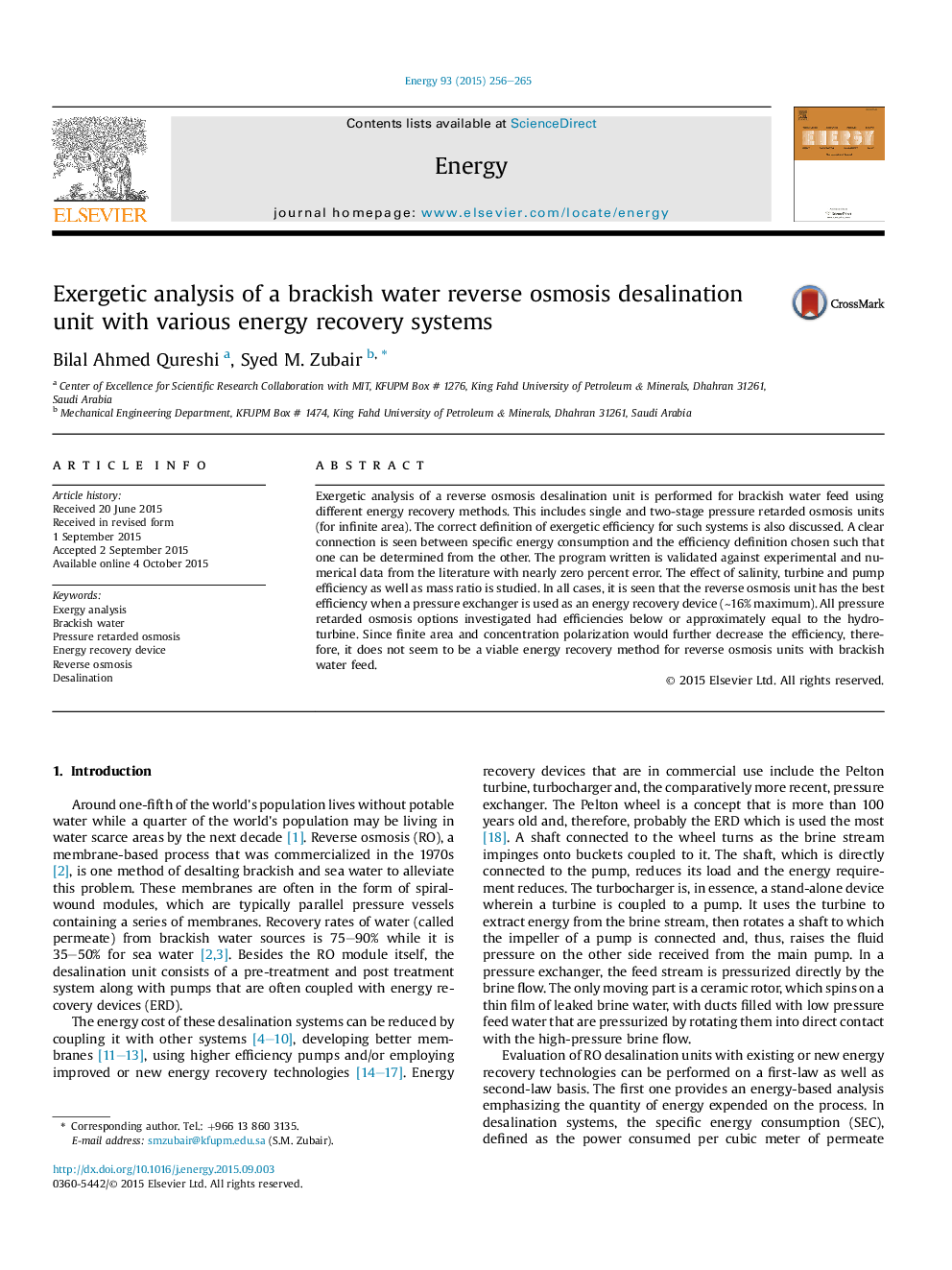| کد مقاله | کد نشریه | سال انتشار | مقاله انگلیسی | نسخه تمام متن |
|---|---|---|---|---|
| 1731088 | 1016084 | 2015 | 10 صفحه PDF | دانلود رایگان |
• Exergetic analysis of reverse osmosis units is performed for brackish water applications.
• Various energy recovery options including pressure retarded osmosis are evaluated.
• The effect of salinity, turbine and pump efficiency as well as mass ratio is studied.
• An explicit connection between specific energy consumption and the second-law efficiency is identified.
• It is demonstrated that the pressure exchanger is the best energy recovery device.
Exergetic analysis of a reverse osmosis desalination unit is performed for brackish water feed using different energy recovery methods. This includes single and two-stage pressure retarded osmosis units (for infinite area). The correct definition of exergetic efficiency for such systems is also discussed. A clear connection is seen between specific energy consumption and the efficiency definition chosen such that one can be determined from the other. The program written is validated against experimental and numerical data from the literature with nearly zero percent error. The effect of salinity, turbine and pump efficiency as well as mass ratio is studied. In all cases, it is seen that the reverse osmosis unit has the best efficiency when a pressure exchanger is used as an energy recovery device (∼16% maximum). All pressure retarded osmosis options investigated had efficiencies below or approximately equal to the hydro-turbine. Since finite area and concentration polarization would further decrease the efficiency, therefore, it does not seem to be a viable energy recovery method for reverse osmosis units with brackish water feed.
Journal: Energy - Volume 93, Part 1, 15 December 2015, Pages 256–265
